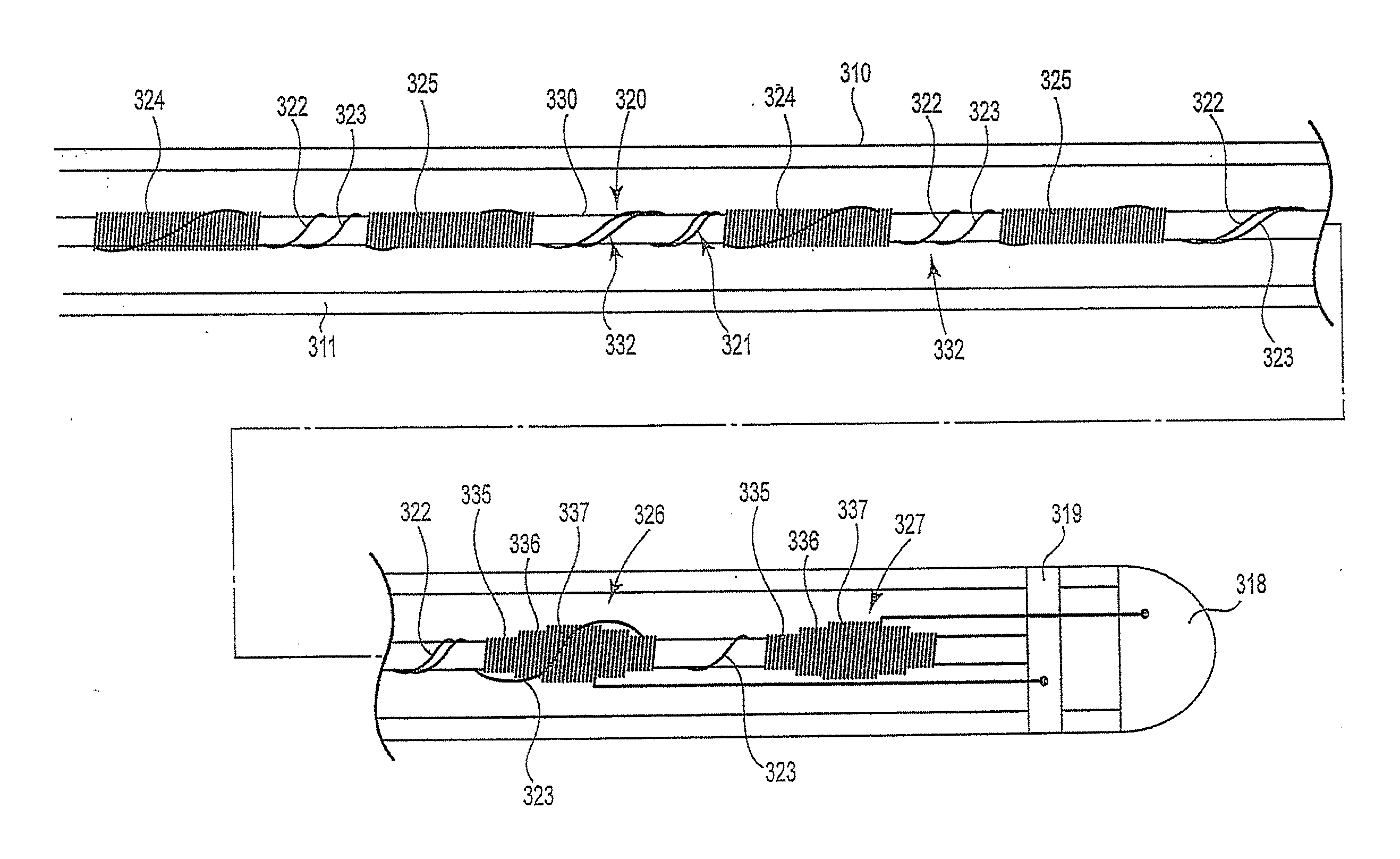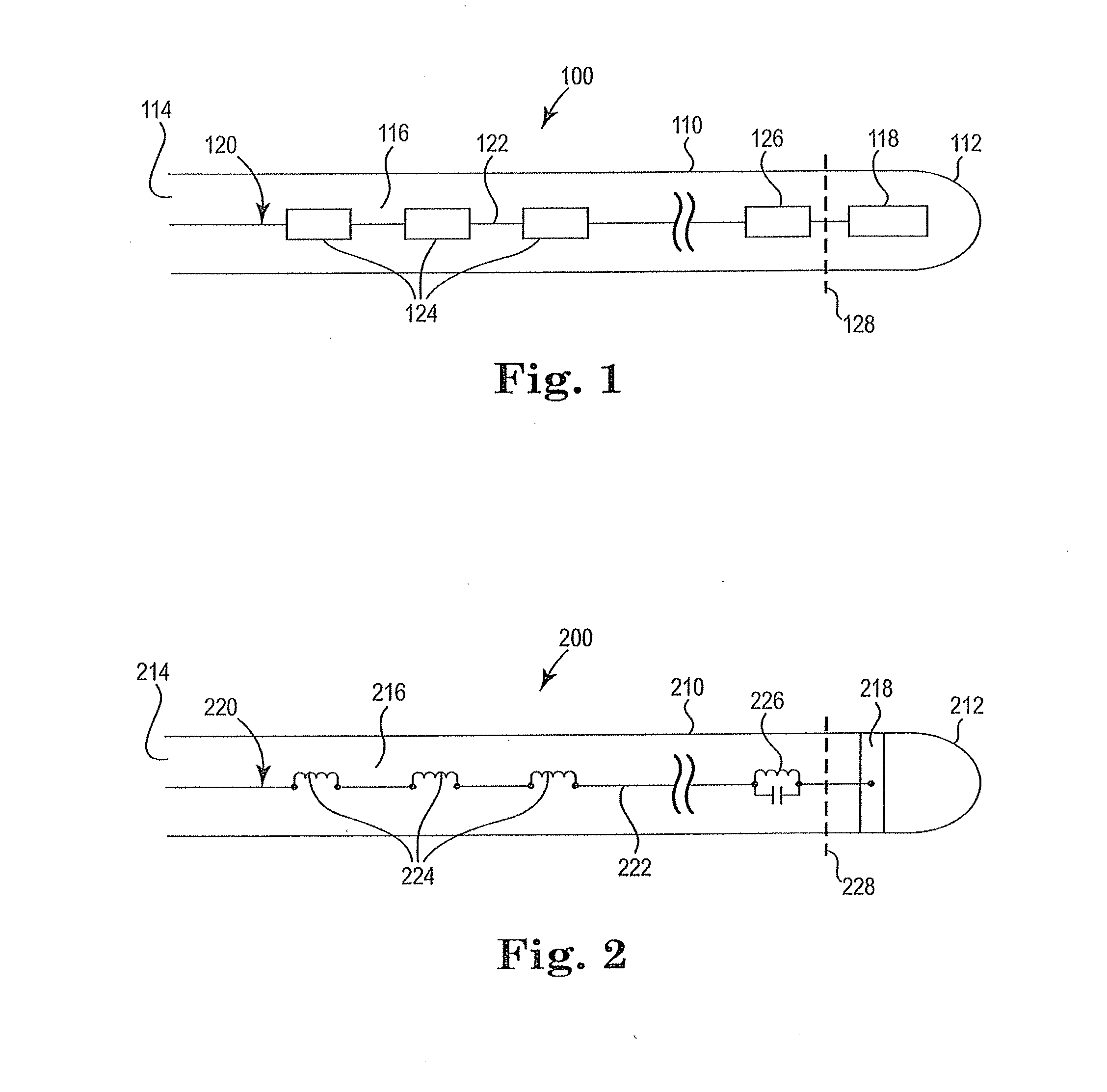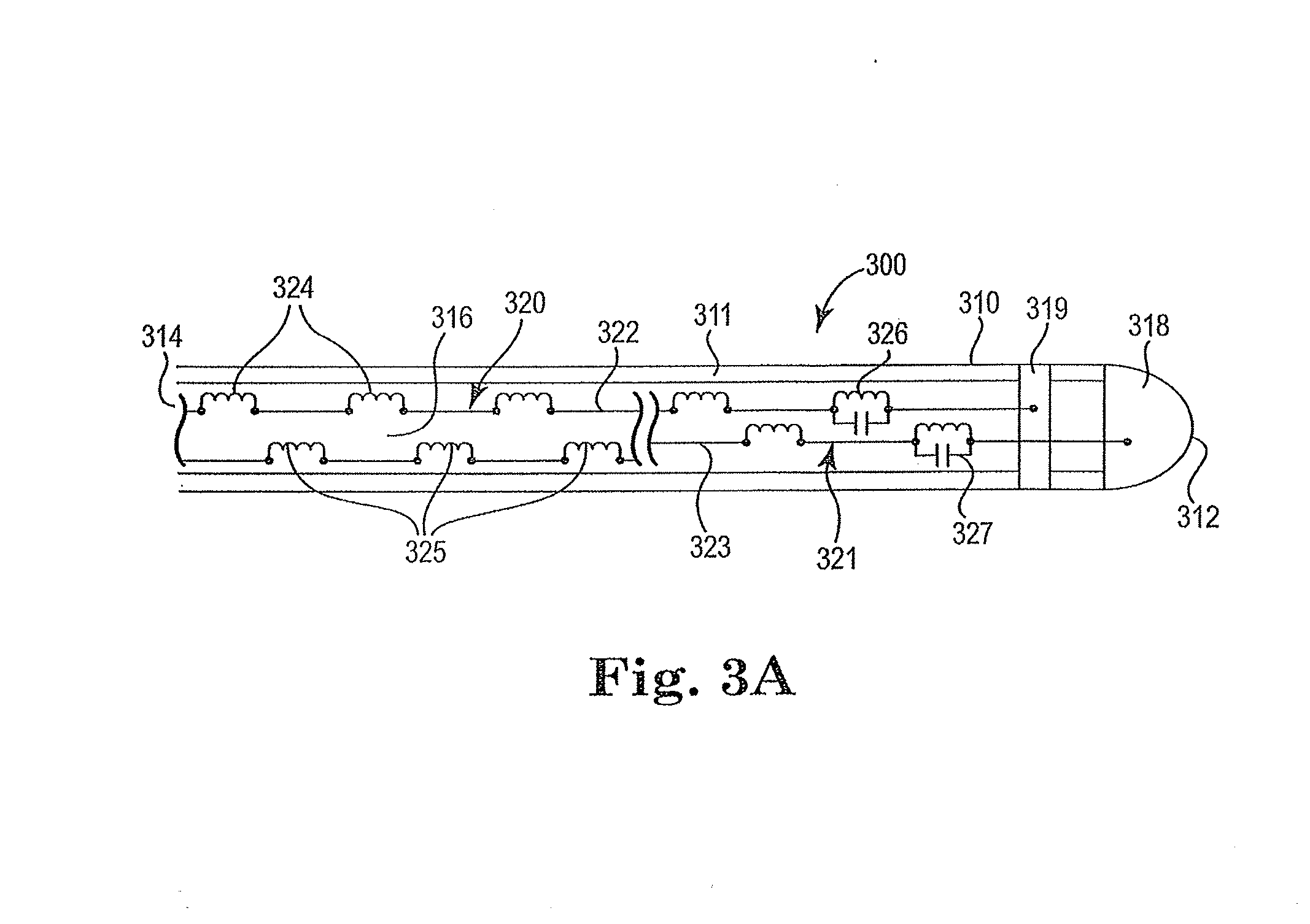MRI compatible co-radially wound lead assembly
a coradial wound and lead technology, applied in the field of medical devices, can solve the problems of high current density in the tissue, rf-induced tissue heating, and patients' safety risks, and achieve the effect of reducing the rf-induced tissue heating
- Summary
- Abstract
- Description
- Claims
- Application Information
AI Technical Summary
Benefits of technology
Problems solved by technology
Method used
Image
Examples
Embodiment Construction
[0064]In describing the invention herein, reference is made to an exemplary lead assembly comprising a catheter. However, as will be appreciated by those skilled in the art the present invention may be used with any implantable medical device. By implantable we mean permanently as with cardiac pacemakers, defibrillators and neurostimulators; or temporarily implantable such as in interventional procedures and including by way of example cardiac ablation devices and the like. Further the exemplary lead assembly may be used external to the body but still be in contact with body tissue such as the skin. Also as used herein, an electrode wire is any conductive structure that is in electrical contact with an electrode. Typically, an electrode wire is an actual wire; however, an electrode wire may also be a circuit board trace, a conductive lumen, or any material which conducts electricity.
[0065]FIG. 1 is a block diagram illustrating the lead assembly 100 in its simplest form in accordance...
PUM
 Login to View More
Login to View More Abstract
Description
Claims
Application Information
 Login to View More
Login to View More - R&D
- Intellectual Property
- Life Sciences
- Materials
- Tech Scout
- Unparalleled Data Quality
- Higher Quality Content
- 60% Fewer Hallucinations
Browse by: Latest US Patents, China's latest patents, Technical Efficacy Thesaurus, Application Domain, Technology Topic, Popular Technical Reports.
© 2025 PatSnap. All rights reserved.Legal|Privacy policy|Modern Slavery Act Transparency Statement|Sitemap|About US| Contact US: help@patsnap.com



